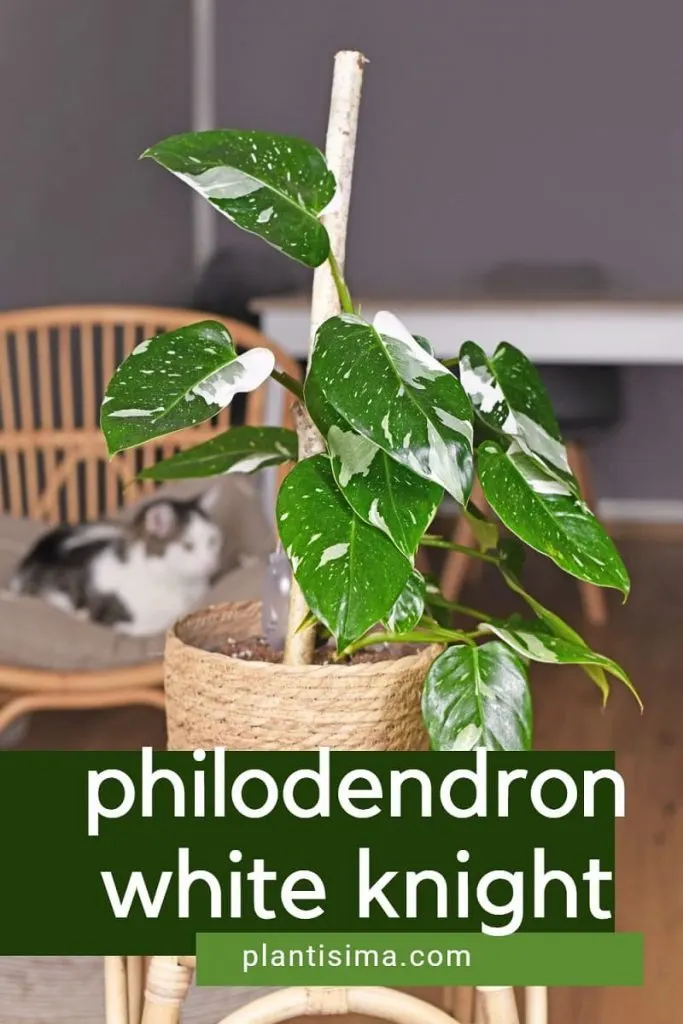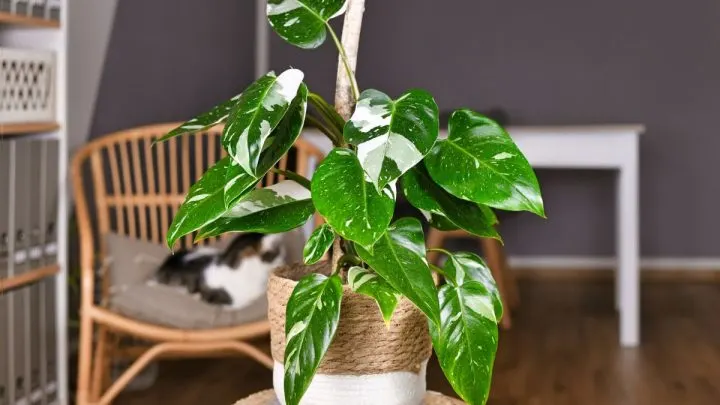It’s that time of the year. You’re wondering what plant you should get next. But you don’t want a plain green color plant, you want to enrich your tropical houseplants collection. It is your lucky day! Philodendron white knight is the right answer.
One of the most wonderful and unusual philodendron species is ready for its new home. We present you with Philodendron white knight. It’s everything your home needs right now.
White knight philodendron has an amazing unique look, its leaves are green with white variegation and will just spice up your houseplants collection.
I know you how a lot of questions now: how to take care of it, is it rare, how can I get one, and so on. Lucky for you this article will contain all the information you need about these beautiful plants.
Philodendron White Knight: General Specifics
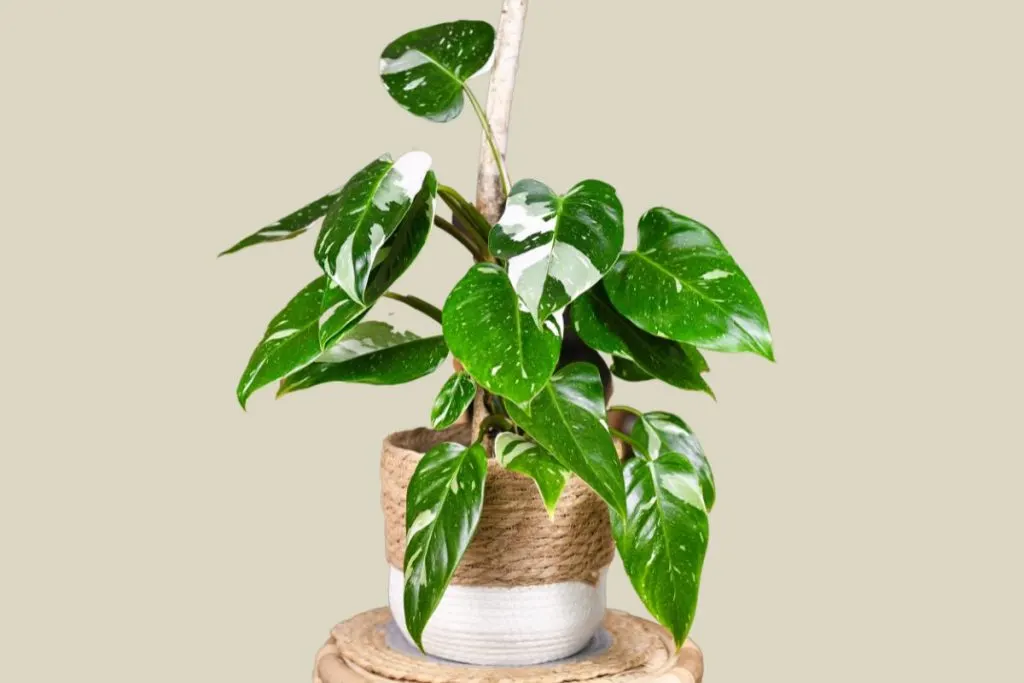
Scientific name: Philodendron sp.
Native Habitat: South America
Growth rate: Medium grower
Size: 3 meters
Type: Araceae
Toxic: Toxic for dogs
How To Take Care Of Philodendron White Knight Plant

Philodendron originates from South America and Mexico. You can find it in rainforest areas. Today it is spread all over the world.
So in the wild, it grows in areas of Australia and Southeast Asia. While as an ornamental plant it grows all over the world.
Although it is a very interesting plant due to its large and decorative flowers and has been collected for a long time, a lot is unknown about it. Not all species are classified or described.
Due to the different ways of adaptation, it can be found in different areas. So the overall adaptation and possible development have to be discovered. Today we will find out how to take care of your philodendron white knight properly.
Philodendron White Knight – Lighting
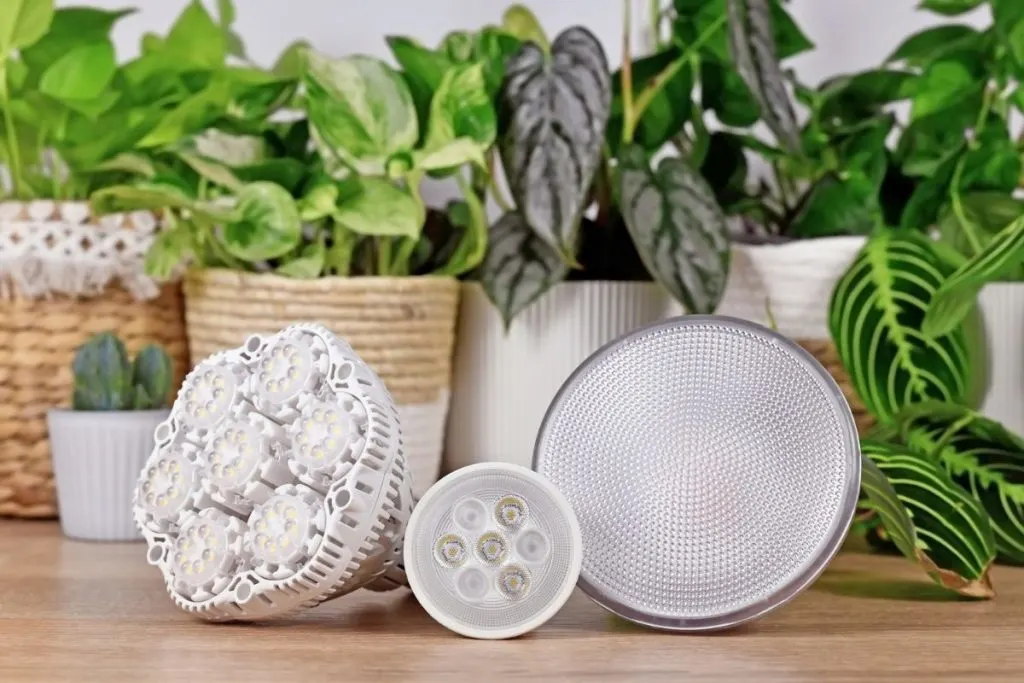
Your white knight philodendron will have a perfect growing process if you place it somewhere where it’s in the indirect sunlight.
Indirect light is what this plan needs for its growth. But direct light now and then for an hour at least won’t kill it. Since their leaves are very delicate, be careful before you decide where to place them.
If you place it in the direct sunlight its leaves will immediately react and that might create a problem for your plant. I know you want to see healthy leaves on your white knight, so make sure that its location is perfect to enable that.
Place it near the east-facing window and there, it will get enough light for its growth. Of course, not every window in our home is perfect for bright indirect light. You can always buy fluorescent lights and figure out a way your plants get some light that way.
Philodendron White Knight – Watering
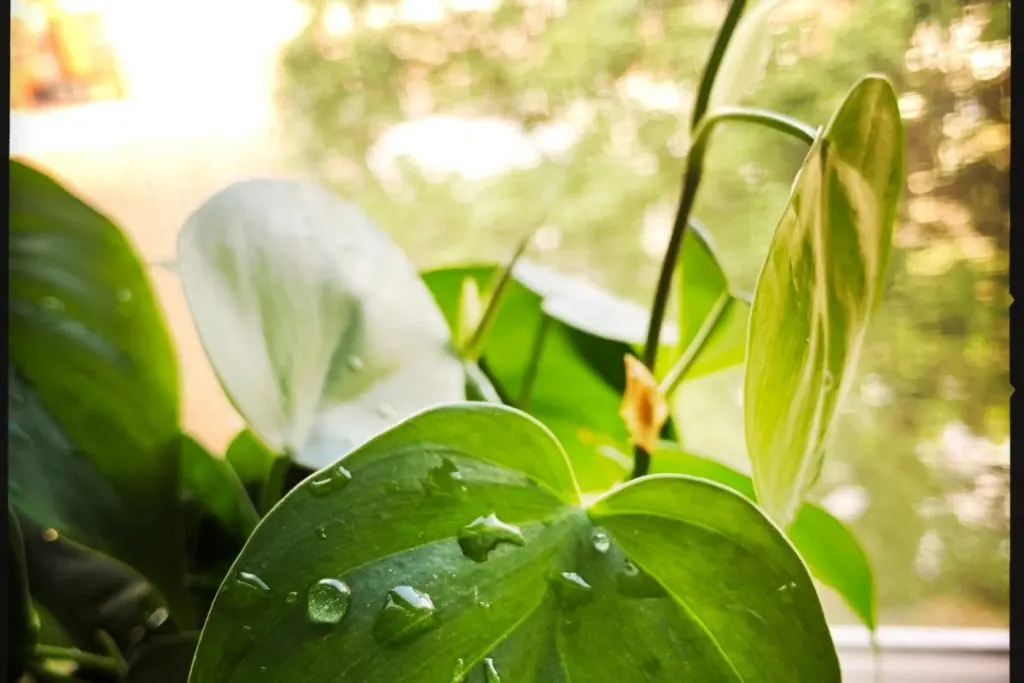
Watering should be done after the top layer of soil has dried, so before watering it is necessary to check that the soil is dry to at least 2 cm deep.
During the summer it needs to be watered more often, at least twice a week. In winter, watering is reduced, so it is necessary to water once every two weeks.
The amount of water depends on the size of the plant and how quickly it is consumed, but it is important to use stagnant or soft water and water under the root.
The soil in the pot must be well-drained to immediately get rid of excess water that can lead to growth problems. White knight philodendron can be a good plant for hanging baskets and in that case, you need to watch out for that water.
If you are interested in other hanging basket plants for shade take a look at our site or other philodendron types such as the neon philodendron.
Philodendron White Knight – Temperature
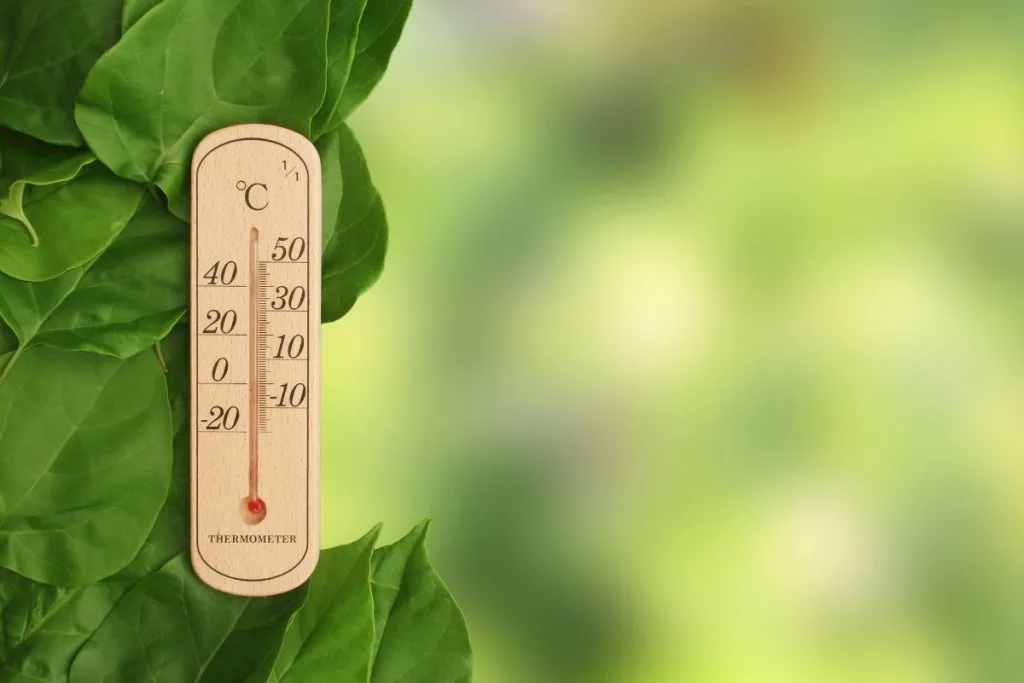
Philodendron is a tropical plant, so such conditions are suitable for its growth, although it easily adapts to indoor space. It likes well-lit places where temperatures do not fall below 12 ° C in winter, but also where there is a heating source nearby.
Due to this information, it’s best if you place it in a bedroom or hallway, somewhere where the temperature is always optimal and the same.
Philodendron White Knight – Humidity
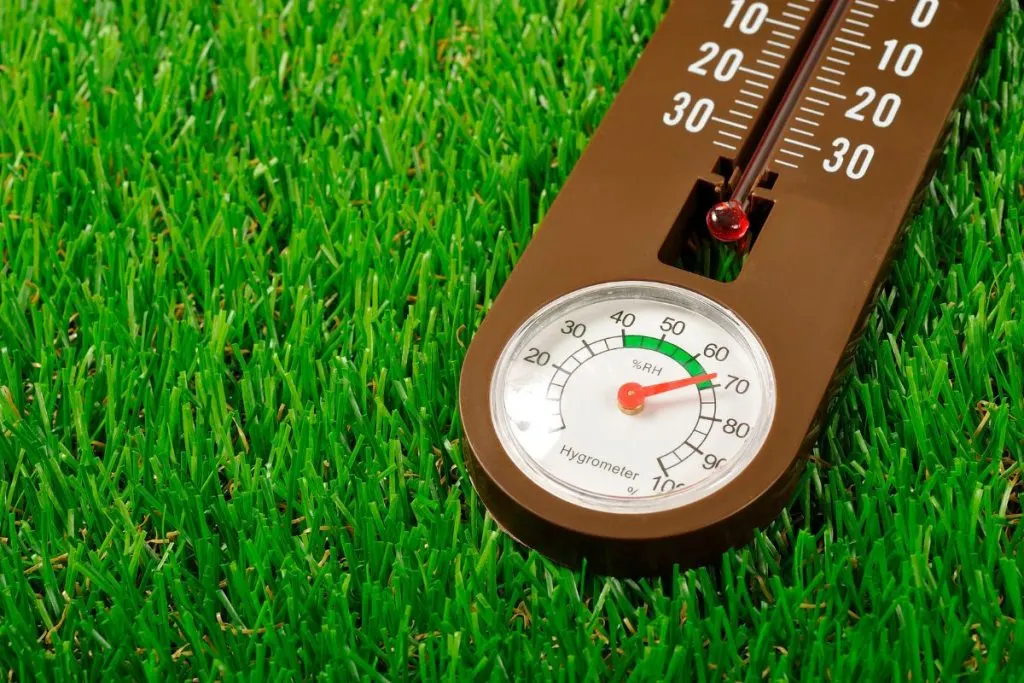
During the winter months, the air in most homes is dry, which does not suit many houseplants. With a few tips, by regulating the humidity indoors, houseplants can retain their attractive appearance all year round.
Tropical plants require quite high humidity for their development. In dry conditions caused by heating during the winter, houseplants find normal functioning much more difficult.
Despite this, many houseplant growers are in perpetual search of a solution. Before taking any of the solutions below, consider the amount of moisture needed for each plant. If its origin is known, it is already easier to determine its needs.
However, another method is possible to determine the plant’s need for moisture, which is manifested through the observation of visual signs of stress on the plant. Symptoms can be recognized as brown tips or edges of leaves.
If you notice brown tips on your white knight, react as fast as possible! Damp pebbles should be useful for this situation. Try using a tray filled with pebbles and you will see the results soon. They are very good for improving humidity.
Philodendron White Knight – Soil And Fertilizer
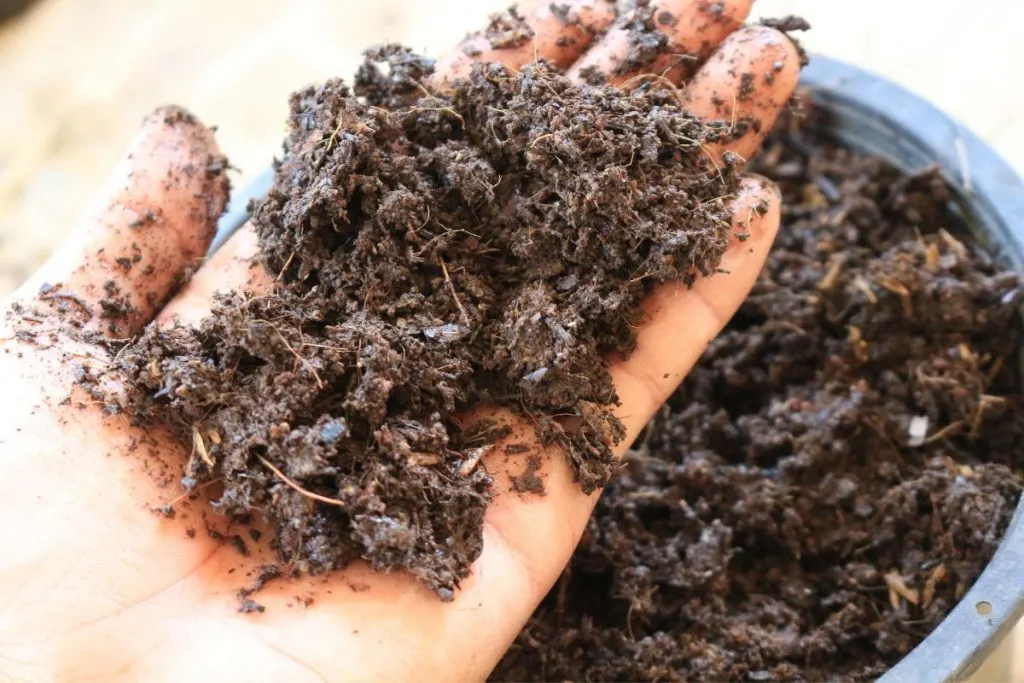
Most tropical plants prefer well-drained soil and the white knight philodendron is one of those plants. A plant’s soil is important for its healthy growth so make sure that the plant’s soil has everything that it needs to have.
For philodendron white knight you should use potting soil. Don’t mix potting soil and potting mix. There is a difference between those two.
Potting soil contains soil and sometimes sand, and potting mix is a lot more. Well draining soil and potting soil are perfect for that.
When it comes to fertilizer, tropical plants including white knights love liquid fertilizer and pure organic fertilizer. If you notice a slow growth in your plant, a bit of worm casting can help your plant grow faster.
They are not a cheaper fertilizer choice but if you want to provide your plant with the best care, it’s your best choice for sure.
If you want your plant to achieve that lush green foliage look you have to provide all the nutrients your plants need including good fertilizer.
Orchid Bark And What Is It Used For?
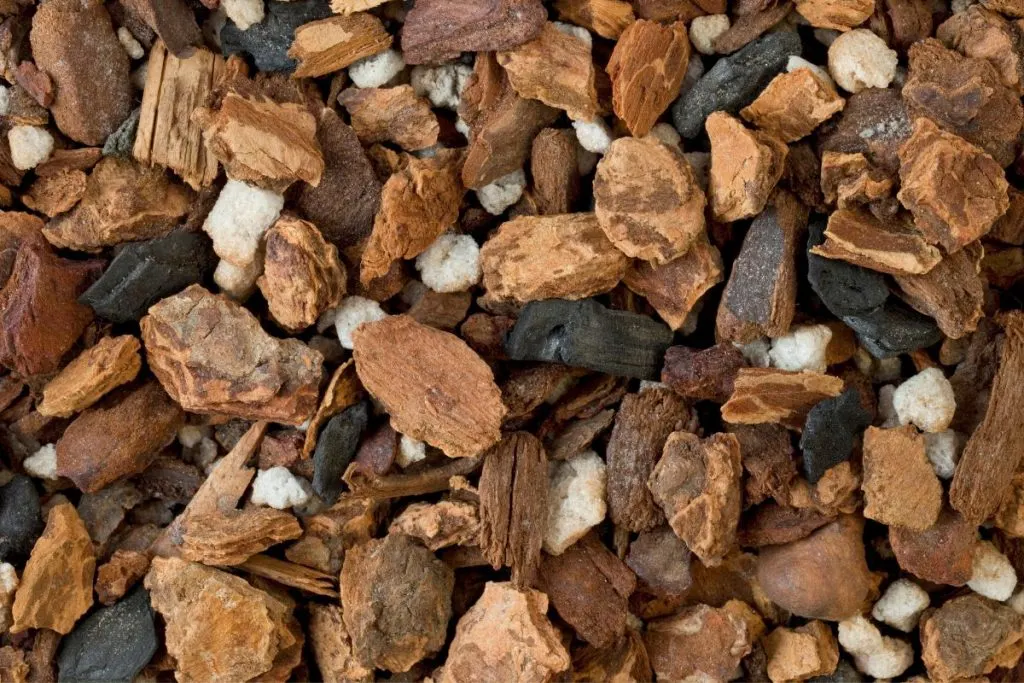
Orchid bark is a supplement or type of filling for your pot, which is a great choice for your houseplant, in this case, philodendron. For plants that need fast absorption of moisture and water, this is an ideal choice.
If you can’t get orchid bark, you can make it yourself at home. Of course, your plant will not root in orchid bark, it mixes with other soil types and other soil supplements.
For 10 liters of bark you take about 0.5 kg of moss, the same amount of coal, and 0.3 kg of peat. If you add activated charcoal, then crush 30 tablets.
Planting From Seeds
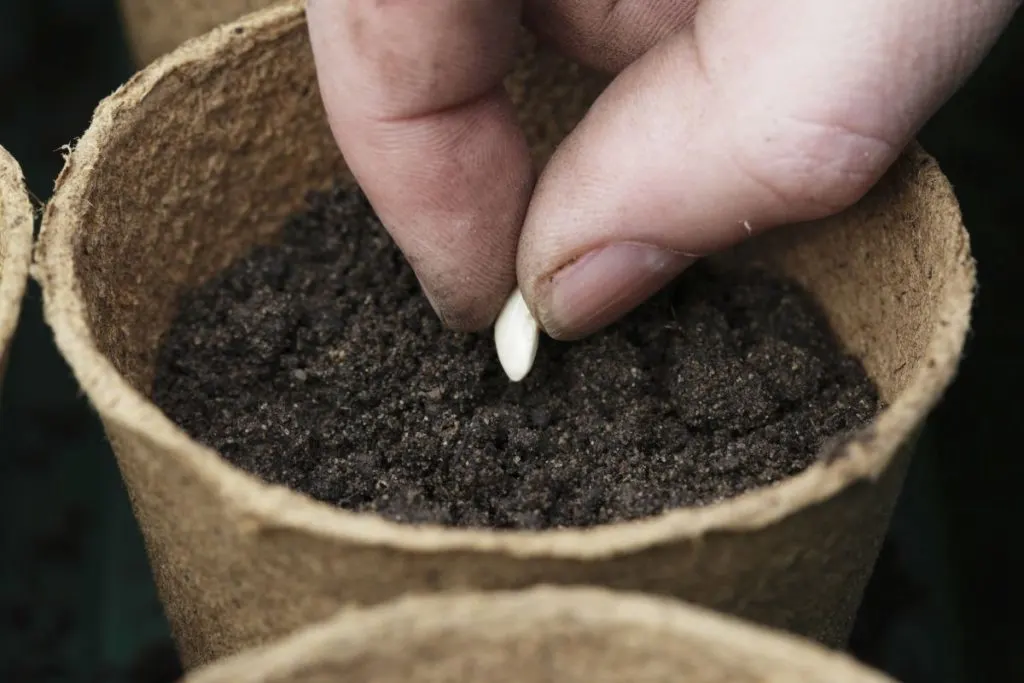
White knight philodendron seeds are very small and rarely mature in home cultivation, so it is difficult to grow this way.
If you are buying seeds, you need to choose tested and treated. Since it is very small, it is necessary to sow a few seeds in peat and loose soil and cover them with an inch of soil, moisten and cover with foil.
The seeds are very germinating. Do not soak them before sowing. Keep them at a temperature of 20 to 23 ° C to germinate. Remove the foil after 6 weeks and continue regular watering.
Repotting
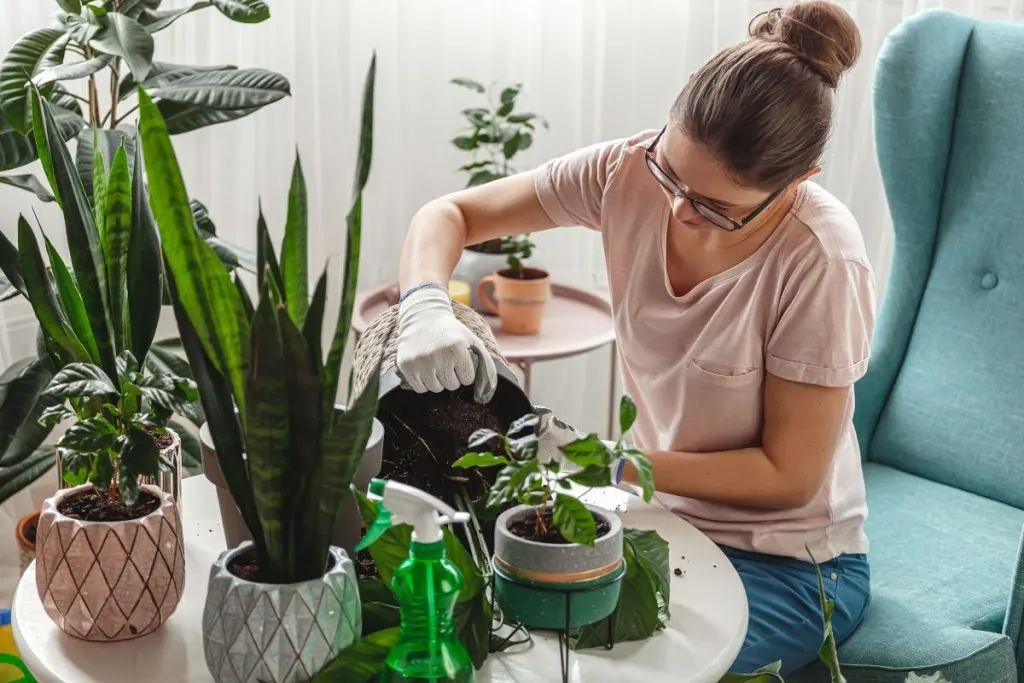
Transplant the white knight philodendron plant every two years or at least when the roots start to sprout from the ground.
The best time for this is late December or early June, and during transplanting the soil can be removed from the roots or old and unnecessary roots pruned.
The plant is planted in a larger pot in the soil with flow drainage and the soil is firmly pressed. It is watered after one to two days, and it is advisable not to add fertilizer for the first two weeks.
It might be a bit silly to say that you don’t have to be very careful with this plant, but you don’t. Its leaves are very strong, its stems as well so just do it with a bit of care.
Cleaning

Maintaining philodendron involves a few simple steps to keep the plant healthy and satisfying. Breaking the crust is important due to the oxygen saturation of the soil, so it is recommended to lightly chop the upper part of the soil if it hardens after watering.
The plant around the appearance of the plant includes removing dust, which can be done by manually wiping each leaf or showering with water, and supporting the plant. If you notice yellow leaves, which isn’t good, remove their tops so the plant growth isn’t out of order.
Pruning
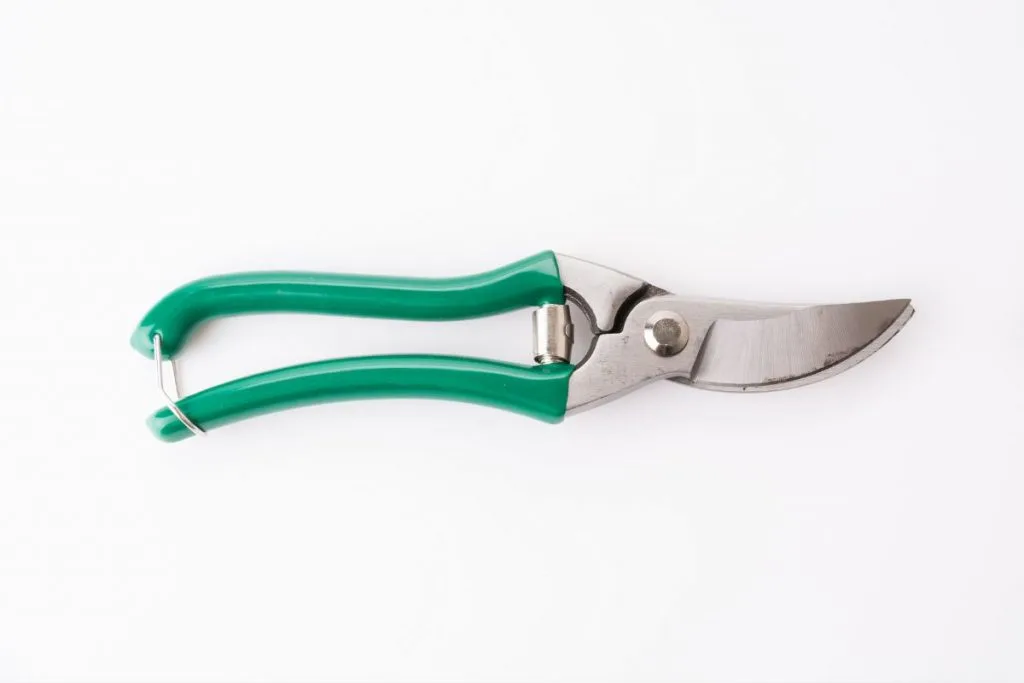
The plant is pruned, if necessary, in spring or autumn. Dry or diseased branches can be pruned to prevent further spread of the disease, but the canopy can also be shaped for appearance. The plant responds well to pruning, so it will easily expel new branches if it is over-pruned.
Excessively large plants can also be pruned by completely removing the leaves from the stem by using pruning scissors, leaving a bare stem from which to start growing a new plant.
For pruning, it is best to use garden shears or a sharp knife, and as some species release large amounts of juice, it is good to use gardening gloves to prevent an allergic reaction.
When it comes to cleaning this plant to provide a healthy stem, healthy leaves, and a healthy plant in general, you should do it once a week.
You can clean its leaves with a soft sponge and warm water. Some even do it with banana peel because it provides a shiny effect for your plant leaves.
Propagation

The white knight philodendron can be propagated by seeds, the most common method is propagation by cuttings.
In the spring, cuttings at least 15 cm long are taken from the top of the plant. The desired part is cut with sharp scissors or a knife and the leaves are removed from the part that will be laid on the ground.
It is laid in a mixture of sand and peat and after 3 to 4 weeks the roots sprout. The plant should be watered moderately during rooting, and fertilizer is added only after four weeks. To make it easier to maintain, it can be supported by a peg.
Another method of propagation is by shoots in early spring when young buds are cut from the plant that can be left in the water to take root or planted directly into the ground.
Propagation With Stem Cuttings
- Take a container and fill the container with soil.
- Let the water drain through the potholes when you water it.
- Cut the little part of the stem.
- Take a stick and make a hole in the container and put the stem cutting into the hole. This way, you will attach it.
- Place it somewhere where your white knight plant can get indirect sunlight.
- Make sure the soil doesn’t go drained.
- When you see the development of the plant (its roots) place the plant in a stable location.
What Pests Attack White Knight Philodendron?

The red spider is a common insect that is recognizable by the brown spots on the leaves and the silky web under the leaves. It is visible after spraying with water as it comes out on the upper parts.
Although it cannot harm the whole plant, it leaves ugly marks on the leaves. It is effectively solved by wiping the leaves with a mixture of water and hand soap.
Neem oil is your salvation for pests. It will kill common pests including spiders, bugs, thrips, fungus gnats, and any other pests that might attack your new white knight philodendron.
How to get rid of gnats in plants naturally? With us find out the best 13 ways.
Diseases
There are several diseases of this plant caused by unfavorable growing conditions. To avoid those, read this next part about its diseases very carefully.
Root Rot
Root rot is caused by too much water or too long water retention in the soil where it grows.
When planting philodendron, it is necessary to take care of proper drainage to reduce the possibility of rot.
It is also important to plant that the plant is healthy and treated soil so that the disease does not spread through the soil.
Leaf Spot
Leaf spot occurs for several reasons. The first is overexposure to the sun which causes yellow spots that dry out over time.
The second is excessive watering which causes the leaves to turn yellow which gets them a bacterial leaf spot and they fall off over time.
The third is a fungal disease. Other plants transmitted it. You need to remove the infected plant and treat it with a fungicide.
Interesting Facts
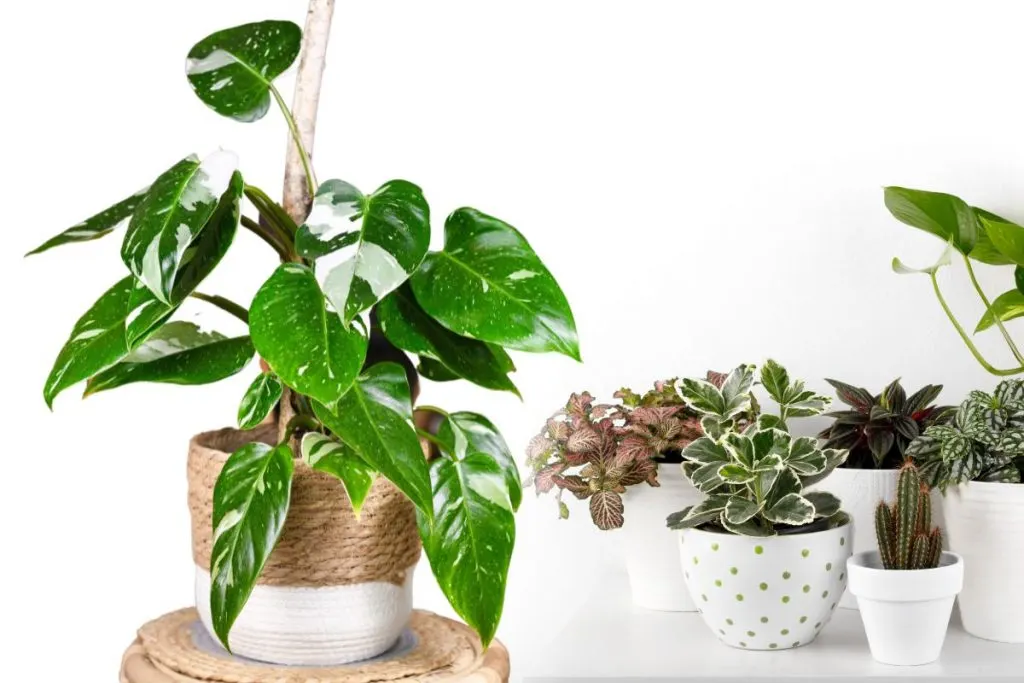
In the wild, one species of wasp nests and lays eggs on philodendron shoots and is dependent on it. However, drinking juices leave traces on flowers that open incorrectly.
Philodendron in the wild often has a symbiotic relationship with ants. Some species produce nectar outside the flower thanks to special glands on the stem.
The sweet scent attracts ants that feed on it and make their nests in the roots of philodendrons.
Nectar is converted into a sticky mass that is stored and used as a food source during shortages. Sometimes an ant colony can be so large that it kills but does not destroy the plant.
History
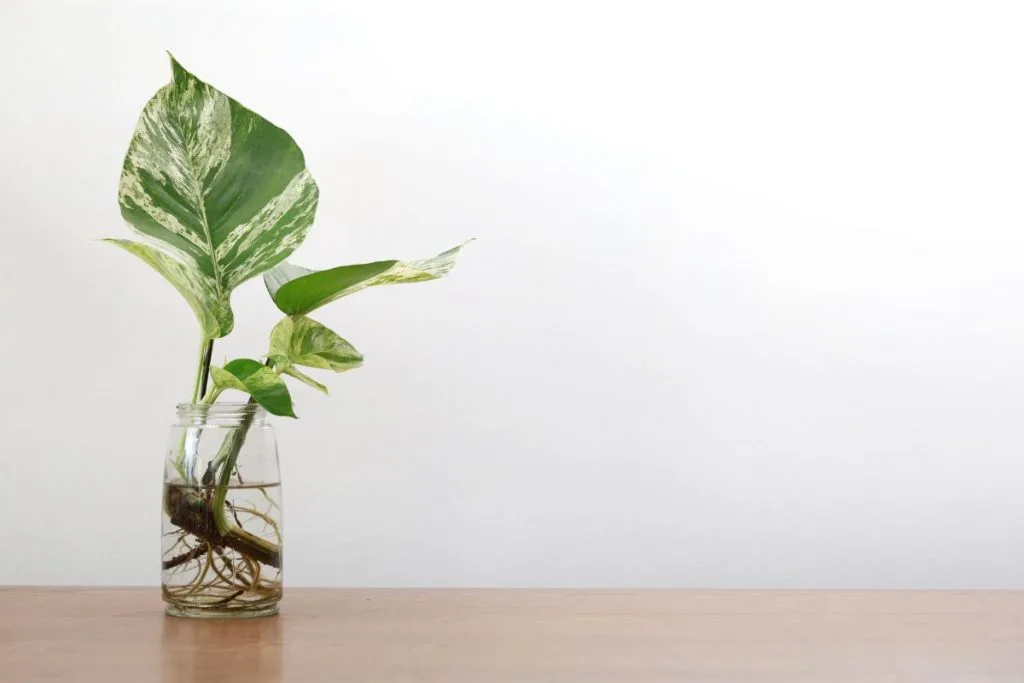
It is believed that the philodendron was discovered during the 17th century on the islands of Martinique and St. Thomas.
After being collected by biologist Georg Markgraf, they aroused public interest because of their beautiful leaves.
By the 19th century, many species had been explored (white knight specie as well). Various finds were collected, but they were often classified into different families.
During the 19th century, Heinrich Scott included them in a common family because of similarities in flowering.
Philodendron white knight: Frequently Asked Questions
Is White Knight Plant Toxic?
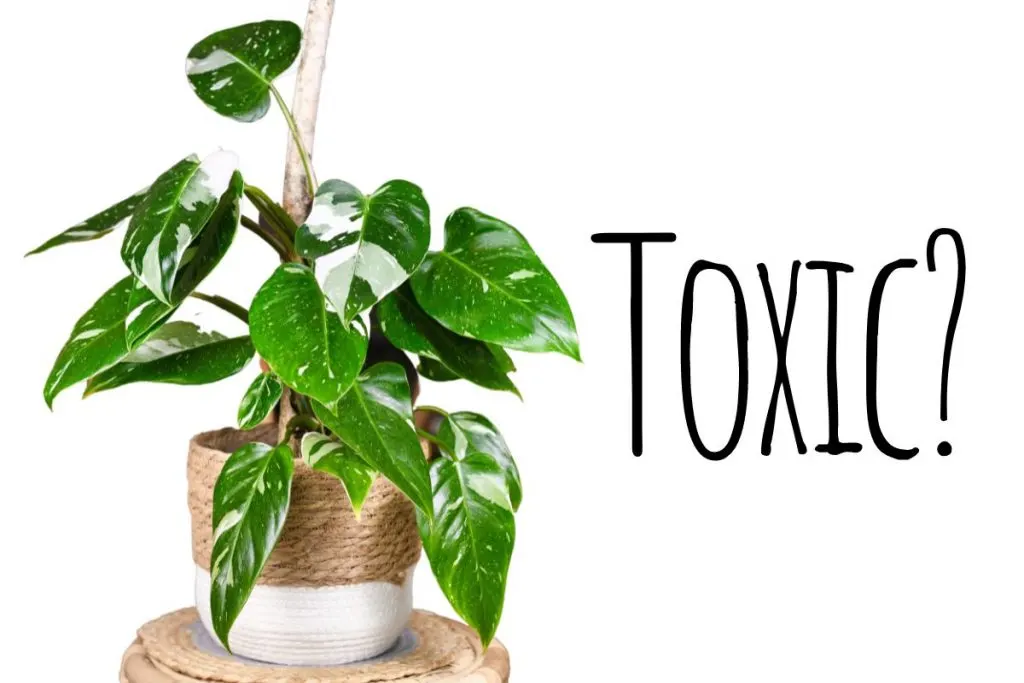
Philodendron leaf juice can cause a reaction on human skin accompanied by redness, itching, or swelling, and consumption of the leaves can cause choking and vomiting.
Pets, especially cats, can chew the leaves, which leads to vomiting and suffocation, and large amounts to serious poisoning.
For this reason, they should be kept out of the reach of children and pets. Despite all the dangers, philodendron is a plant that is very often grown indoors due to its tropical appearance and ornamental foliage.
In addition to adapting well to conditions, it purifies the air and destroys negative particles that contribute to the formation of lung or respiratory diseases. One other thing that a white knight philodendron contains is calcium oxalate crystals that are very toxic for humans and pets, especially dogs.
Is Philodendron White Knight Rare Plant?

Philodendron white knight is one of the rare plants for sure! In the past few years, it has become a very popular plant, and maybe because of that and its demand, it’s very hard to find this type of aroid.
It’s an exquisite plant. A true plant lover shouldn’t be distracted in his search for that information lol.
What Are The Differences Between White Knight And White Princess?

Some people mix white knight philodendron with philodendron white wizard and white princess. The main obvious difference is their structure of leaves. If you look carefully you will notice that difference.
White princess’s stems have a dark purple shade inside and for a white knight philodendron, it’s very rare to get that shade on his stems. The insides of his stems are usually dark red. She doesn’t like direct sunlight, unlike the white knight who enjoys it now and then.
Wrapping It Up
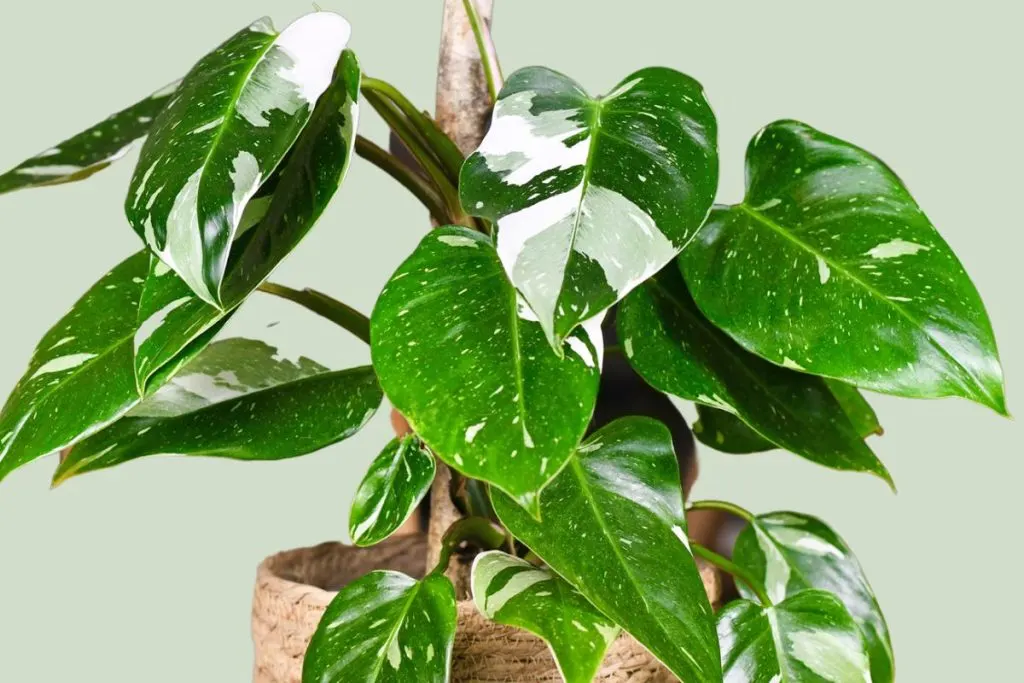
For all the plant collectors out there, we hope this article was an informative guide for the philodendron white knight plant.
Once you buy new plants it’s always hard to learn so much about them in the beginning, but it doesn’t have to be.
Don’t wonder if you’re placing it where there is too much light or if you’re filling its entire pot with organic materials, read about it carefully.
White knight philodendrons are hard to handle. But now that you’re done with our article, I’m sure you know how to take care of it properly.
Thanks for stopping by. See you next time with more interesting facts about some new plants!
